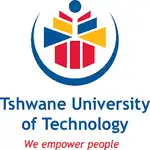TUT National Diploma in Radiography: Diagnostic

Title: “Embarking on a Radiography Journey: Unveiling the National Diploma in Diagnostic Radiography”
Are you passionate about the world of medical imaging and patient care? If so, then you might be interested in the National Diploma in Radiography: Diagnostic (NDRG96), offered at the Arcadia Campus. This qualification, sitting at NQF Level 6, paves the way for a rewarding career in the field of diagnostic radiography. Let’s dive into the details and explore the exciting path that awaits you in the world of radiography.
A New Era in Radiography Education
Before we delve into the specifics of this program, it’s important to note that the landscape of radiography education is evolving. For prospective students intending to enroll in this qualification from 2017 onwards, please be aware that after 2020, the program will no longer lead to a Baccalaureus Technologiae. Instead, it will align with the newly-implemented Higher Education Qualification Sub-Framework. Stay updated by visiting the university’s website for the latest qualifications.
Admission Requirements and Selection Criteria
The road to becoming a diagnostic radiographer begins with meeting certain admission requirements and selection criteria. The criteria differ based on when you obtained your senior certificate:
For Applicants Who Obtained a Senior Certificate Before 2008:
- Admission requirement(s): A Senior Certificate or an equivalent qualification, with a D symbol at Standard Grade or an E symbol at Higher Grade for English, Mathematics, Physical Science, and Biology or Physiology.
- Selection criteria: Prospective students will be selected based on their performance in the Senior Certificate (40%), a TUT potential assessment (40%), and an interview (20%).
For Applicants Who Obtained a National Senior Certificate in or After 2008:
- Admission requirement(s): A National Senior Certificate with a bachelor’s degree or a diploma endorsement, or an equivalent qualification, with an achievement level of at least 4 for English (home language or first additional language), 4 for Life Sciences, 4 for Mathematics, and 4 for Physical Sciences.
- Selection criteria: Applicants must have an Admission Point Score (APS) of at least 22. The APS will contribute 60% to the final admission score, while the potential assessment and interview will contribute 40%.
Three Years of Dedication
The National Diploma in Diagnostic Radiography spans three years, with day classes and an intake in January only. Please refer to Chapter 2 of the Students’ Rules and Regulations for information regarding exclusion and readmission.
Becoming a Registered Professional
Upon successful completion of this program, you’ll be required to register with the Health Professions Council of South Africa (HPCSA) as a student radiographer. This registration is a crucial step toward your professional journey.
Real-World Experience
Radiography is a hands-on field, and this program ensures that you gain valuable experience through compulsory cooperative learning over three years at HPCSA-accredited clinical training facilities.
Beyond Radiography
In addition to radiography-specific coursework, the program includes a compulsory first-aid program and a computer skills course in the first year of study. These skills are essential in modern healthcare settings.
Financial Considerations
It’s important to be prepared for the financial aspects of your studies. Here are some estimated expenses:
- Computer skills course: Approximately R200 for the first year of study.
- Prescribed textbooks: Approximately R8,000 per annum.
- Radiography student society fee: Approximately R200.
- Required uniforms: Approximately R1,500.
- Social event for first years: Approximately R100.
Additionally, students are required to cover the cost of immunization against Hepatitis B and any travel expenses associated with clinical training.
Special Rules and Community Service
Please be aware that special rules apply to this qualification, and it’s your responsibility to familiarize yourself with them. After completing the three-year program, you’ll be expected to render compulsory community service for twelve months, as stipulated by the National Department of Health.
Subject Credits and Curriculum Overview
The program includes a diverse range of subjects, each contributing to your overall knowledge and skills as a diagnostic radiographer. For a detailed breakdown of subject credits and the curriculum, please refer to the provided syllabus.
Embark on your journey to becoming a diagnostic radiographer today by enrolling in the National Diploma in Radiography: Diagnostic. It’s a path filled with challenges and rewards, and it all begins at Arcadia Campus. Your future in healthcare imaging awaits!




